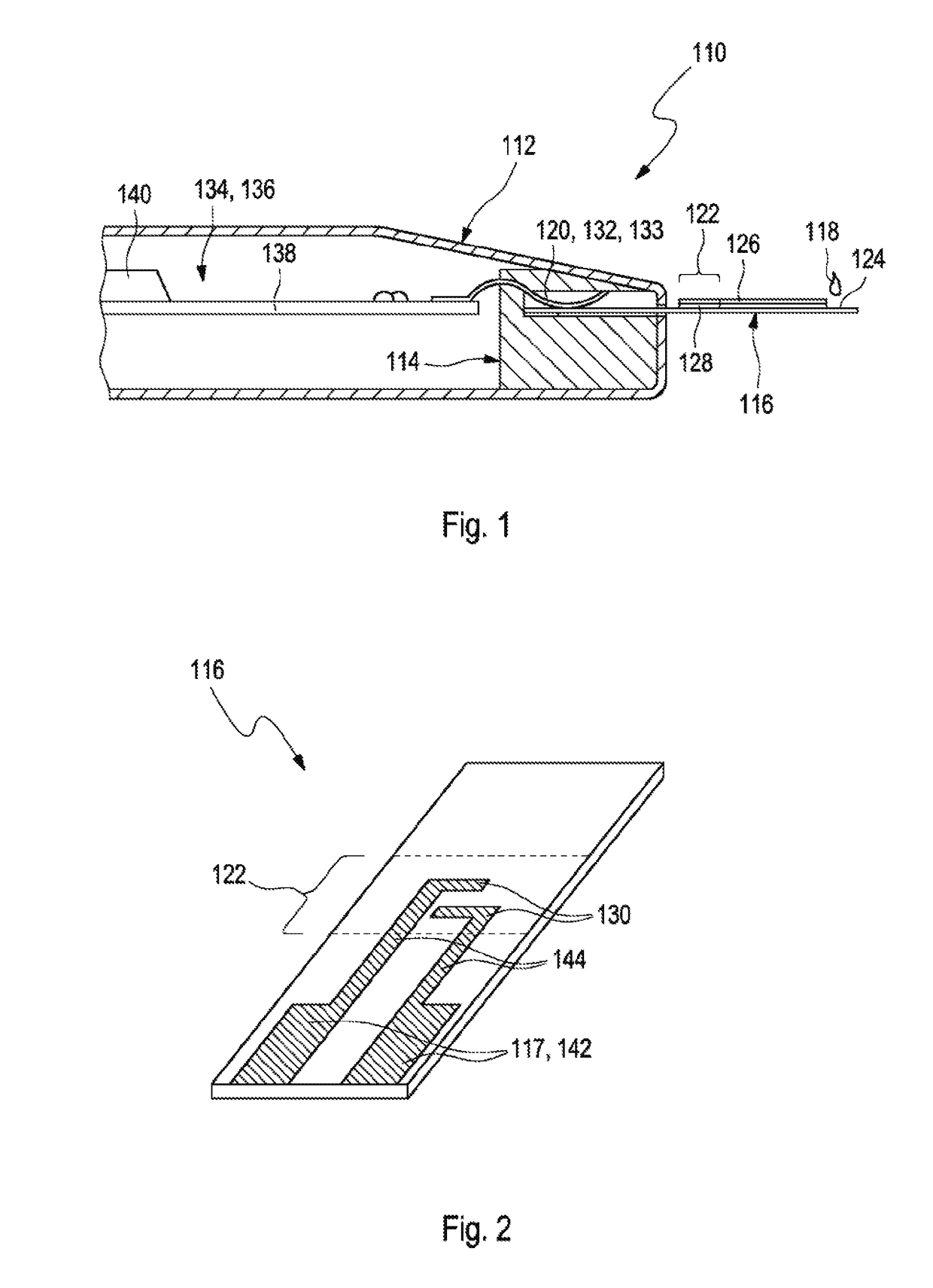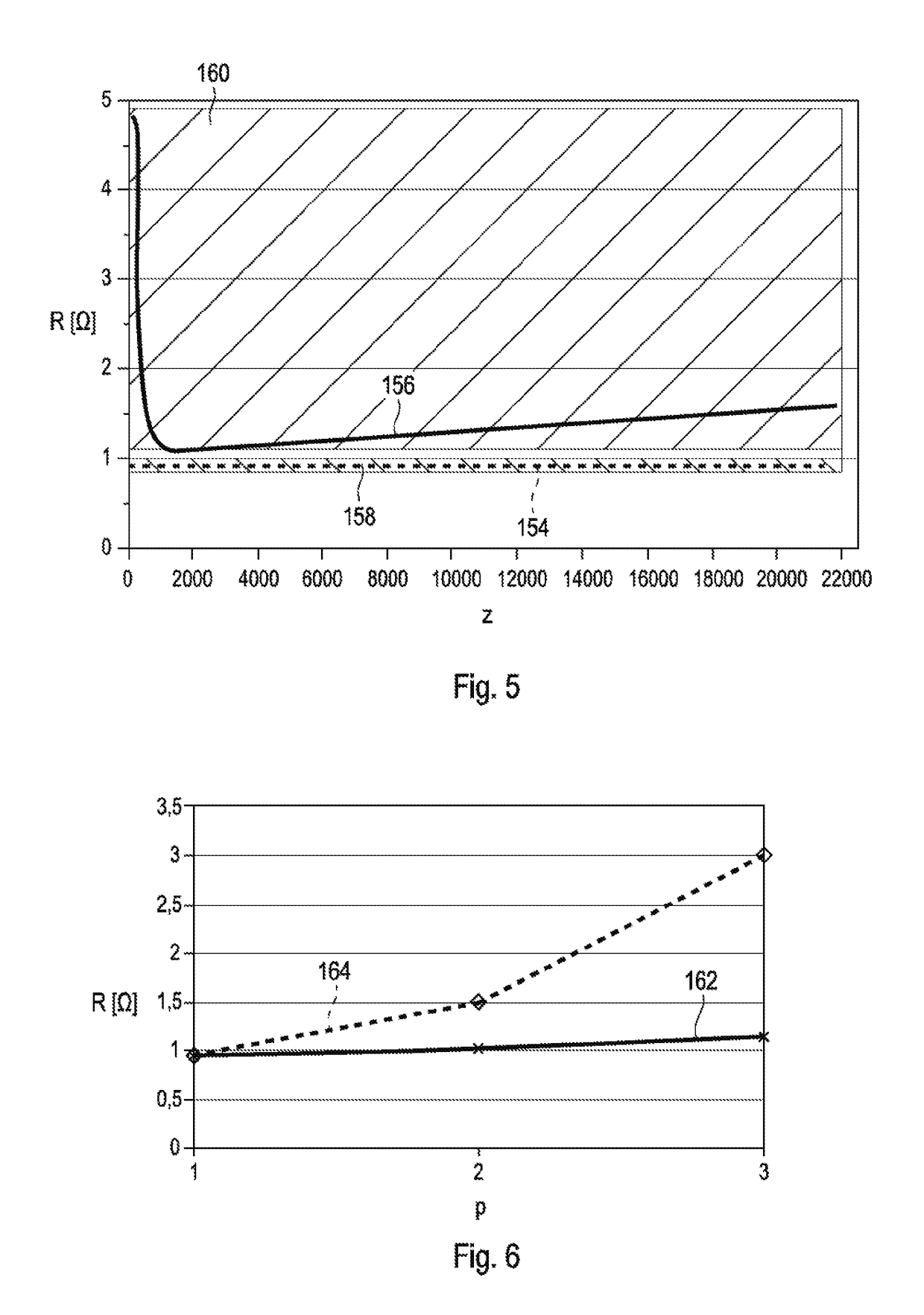Test element analysis system
- Summary
- Abstract
- Description
- Claims
- Application Information
AI Technical Summary
Benefits of technology
Problems solved by technology
Method used
Image
Examples
first embodiment
[0028]In the present disclosure, a test element analysis system for an analytical examination of a sample, in particular of a body fluid, is disclosed. The test element analysis system comprises an evaluation device with a test element holder for positioning a test element containing the sample and a measuring device for measuring a change in a measuring zone of the test element. The change is characteristic for an analyte. The test element holder contains contact elements with contact surfaces which allow an electrical contact between contact surfaces of the test element and the contact surfaces of the test element holder. The contact surfaces of the contact elements of the test element holder are provided with an electrically conductive surface containing metallic ruthenium.
[0029]As generally used within the present disclosure, the term “test element analysis system” may refer to an arbitrary device configured for an analytical examination of a sample. The test element analysis sy...
embodiment 1
[0047] Test element analysis system for an analytical examination of a sample, in particular of a body fluid, comprising
[0048]an evaluation device with a test element holder for positioning a test element containing the sample and a measuring device for measuring a change in a measuring zone of the test element, the change being characteristic for an analyte, wherein the test element holder contains contact elements with contact surfaces which allow an electrical contact between contact surfaces of the test element and the contact surfaces of the test element holder,
[0049]wherein the contact surfaces of the contact elements of the test element holder are provided with an electrically conductive surface containing metallic ruthenium.
embodiment 2
[0050] The test element analysis system according to the preceding embodiment, wherein the electrically conductive surface contains pure metallic ruthenium or a compound comprising metallic ruthenium.
PUM
 Login to View More
Login to View More Abstract
Description
Claims
Application Information
 Login to View More
Login to View More - R&D
- Intellectual Property
- Life Sciences
- Materials
- Tech Scout
- Unparalleled Data Quality
- Higher Quality Content
- 60% Fewer Hallucinations
Browse by: Latest US Patents, China's latest patents, Technical Efficacy Thesaurus, Application Domain, Technology Topic, Popular Technical Reports.
© 2025 PatSnap. All rights reserved.Legal|Privacy policy|Modern Slavery Act Transparency Statement|Sitemap|About US| Contact US: help@patsnap.com



